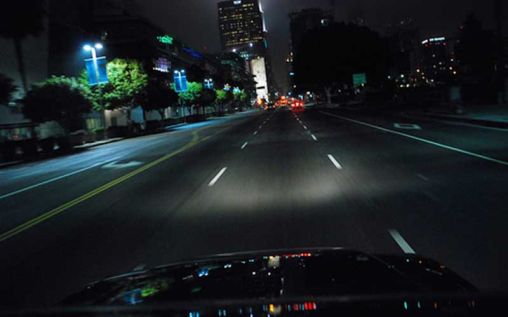Driving At Night: The Perils Of Night Driving
Posted by admin at 16 February 2015, at 21 : 22 PM

If you have done any driving at night, you notice that things are not always what they appear to be. It is very easy to go pass a familiar street or turnoff, for example, because you cannot see as well as you can in the daytime. Blinding oncoming headlights or poor weather conditions also can contribute to the problem. According to the National Safety Council there are three times as many deaths at night caused by auto accidents than there are during the day.
As we age, it is also more difficult to see at night, and with the rise in the number of baby boomers, and therefore the increase in the number of older drivers, it is especially important that we take the utmost care in night driving. As we age, the presence of cataracts causes a cloudy effect, which can dim one’s vision. In some states, eye exams of senior citizens are not as strict as in other states. On top of the vision problem, a senior’s response to emergency situations is not what it was when he or she was young. The American Medical Association has stated that older motorists are, “vulnerable to crashes in complex situations which require good visual perception, attention, and rapid response.”
Myopia is also a problem with some drivers at night. This is commonly known as “shortsightedness” and can also apply to the young. The pupil of the eye will enlarge in night light and sometimes throw the eye out of focus. If you note any type of blurring or lack of focus at night, regardless of your age, make an appointment for an eye examination. If the problem is serious enough, the optometrist or ophthalmologist can require your driver’s license to state you can only drive during the day. Age-related glaucoma, macular degeneration and diabetic retinopathy can also present problems. If there is any doubt in your mind about your night vision, don’t drive at night.
It is also important to have your windshield clean, inside and out, and also your glasses if you wear them. Wipe off your headlights and if they are very dirty, wash them. Make sure they are aligned properly. In the winter, be sure that you remove all snow. Make sure your windshield wipers are working properly. If there is frost or ice on your windshield, make sure you de-ice it by scraping or using a de-icer before you start to drive.
It is easier at night to feel sleepy when driving, so pull over if this happens. If you are on a long trip at night, take frequent breaks, walk around, have a cup of coffee. A lot of drivers try to travel a great distance at night, and this isn’t always wise. Distance looks very different at night, so it is best to drive within the distance of your headlights. Dim your headlights for oncoming cars also, and since night distance is difficult to judge, don’t follow too closely to the car ahead of you. Of course, in inclement weather, drive slowly. It is also very difficult to see pedestrians and bicyclists at night even in good weather.
Sometimes the headlights of oncoming cars give out a “halo effect” and some companies market night-driving glasses which they claim will solve the problem. This may be true, but generally, any type of tinted glasses will also dim your general visibility. If the oncoming lights bother you, look slightly at the side of the road. Dim your lights for oncoming cars so you won’t blind the driver. Regardless of the driving conditions, be aware.
